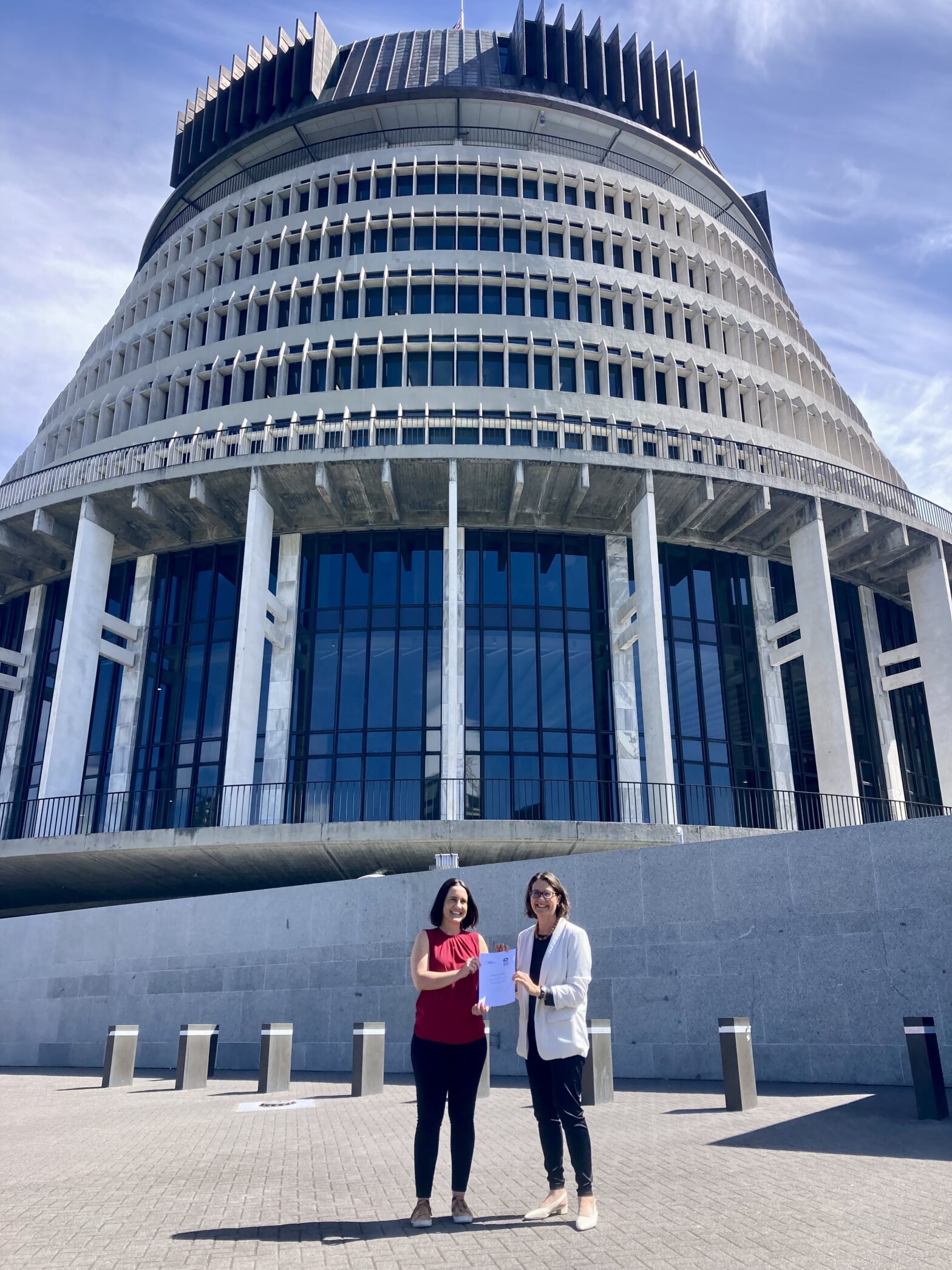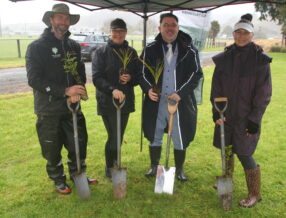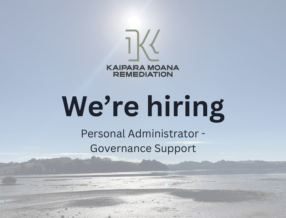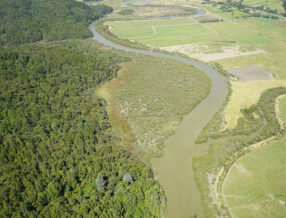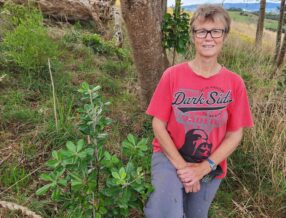October 18, 2022
KMR/NZARM Collaboration a boost for Kaipara Moana
A new partnership between the Kaipara Moana Remediation Programme (KMR) and New Zealand Association of Resource Management (NZARM*) will strengthen training and employment outcomes in the Kaipara Harbour catchment and beyond.
NZARM and KMR will work together to upskill KMR contractors across the Kaipara catchment, including kaitiaki from iwi/hapū partners working with KMR, as well as supporting the development of a national network of freshwater farm planners.
KMR Pou Tātaki Justine Daw says the partnership with NZARM is a is an exciting collaborative opportunity to boost the KMR kaupapa by training and extending KMR Field Advisors, while also creating long-term employment opportunities beyond the current focus of the KMR programme.
Her sentiments are shared by NZARM President Nicola McHaffie.
“Building the skillsets of current resource management advisors and capacity to support landowners to take on-farm action to protect waterways is key to New Zealand’s future,” she says.
NZARM CEO Matt Highway is leading the development of a capability building project across New Zealand. He says the three-year funding (in part from Regional Councils) will enable the development of systems, processes and training resources.
“It will accelerate NZARM’s ability to grow a national cohort of Freshwater Farm Plan advisors, such as those already operational through KMR,” he says.
As a Jobs for Nature investment, KMR has a dual focus on growing people into new ‘green economy’ jobs, says Justine.
Since November 2021, KMR has developed training courses to upskill over 50 local ‘KMR Field Advisors’, including tangata whenua, to work alongside landowners.
As a result, KMR has so far contracted close to 20 trained Field Advisors who are now developing Sediment Reduction Plans for landowners in the Kaipara Moana catchment.
While still early days, a key to KMR’s ongoing success will be a continued focus on enhancing environmental and social outcomes like job creation, says Justine.
“The KMR kaupapa is to invest in local people to develop and sustain meaningful, nature-based employment, and support people who whakapapa to the Kaipara returning home to work on the project. Our partnership with NZARM will be pivotal in this,” she says.
“KMR operates on a collaborative governance model to ensure that all of the founding parties’ views are understood and factored into decision-making.
“This inclusive approach helps ensure that KMR can effectively support community-led environmental action. Over a 6,000km2 catchment, genuine partnership is key to achieving our goal of planting 20 million trees in the catchment over ten years. We work with, and through, a diverse set of delivery partners and NZARM is a great addition to our kaupapa.
“By investing in communities, KMR is growing social equity and more sustainable, long-term relationships with the whenua.”
KMR and NZARM have a shared interest in supporting KMR’s trained Field Advisors through the establishment phase of KMR, and particularly while the programme continues to scale up.
Matt says NZARM will support the development and roll-out of KMR trained Field Advisors in a number of ways, including offering technical training on soils, erosion risk (and reducing this), wetland identification, riparian classification and riparian management that is regionally specific to the KMR catchment.
Formalised teaching documentation will be developed along with a teaching approach for KMR Field Advisors to assist future accreditation of a Freshwater Farm Plan ‘Sediment Module’ micro-credit. All of these skills will benefit KMR Field Advisors, and help grow a community of skilled practitioners taking action to protect and restore the mauri of the Kaipara Moana.
The Kaipara Moana Remediation Programme is one of New Zealand’s largest catchment restoration programmes, investing $4.67 million last year in projects to reduce sediment flowing into the Kaipara Harbour. Now in its second full year of operation, KMR continues to scale up rapidly and a key part of this is to support Field Advisors to deliver high-quality Sediment Reduction Plans.
Not only is the Kaipara Moana important ecologically, it has deep cultural and economic significance. The harbour is home to several iwi/hapū groups, with local taonga species providing food and medicine, underpinning cultural practices and connecting people to place. The Kaipara is also the breeding ground for New Zealand’s valuable snapper fishery.
However, decades of deforestation and land use intensification have degraded the catchment. Today, less than 10% of original native forest cover and just 5% of wetlands remain, leading to a seven-fold increase in soil erosion and associated sediment washing into rivers and the harbour.
*New Zealand Association of Resource Management (NZARM) a not-for-profit professional membership organisation established in 1953. NZARM is a long-established organisation that is recognised as a professional home for natural resource management professionals. NZARM provides connections and networking, training, conferences and field-based seminars for members and non-members alike. NZARM is funded by its members and employs a CEO and a secretariat. Read more about NZARM.
